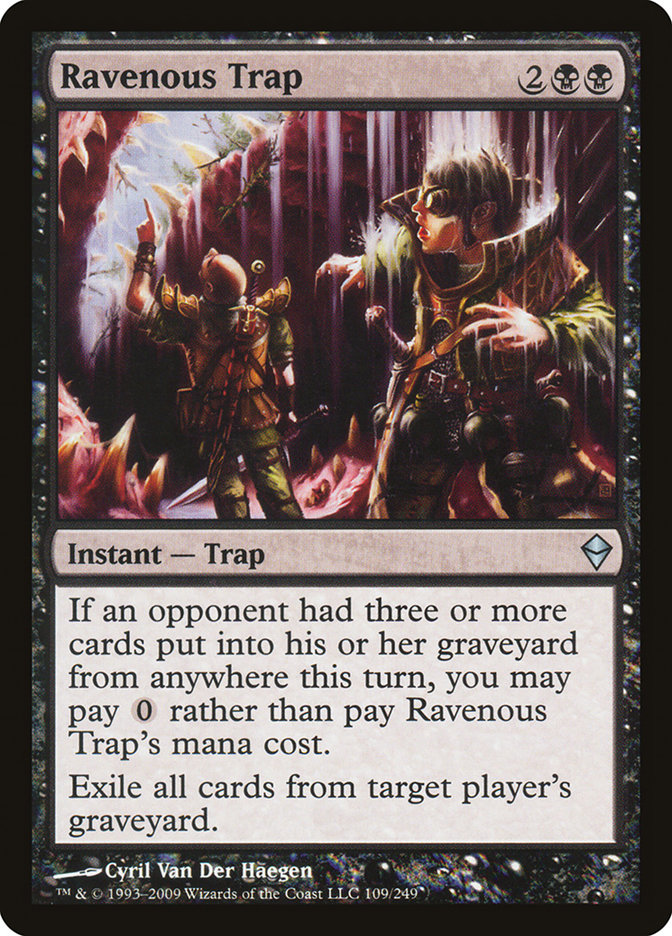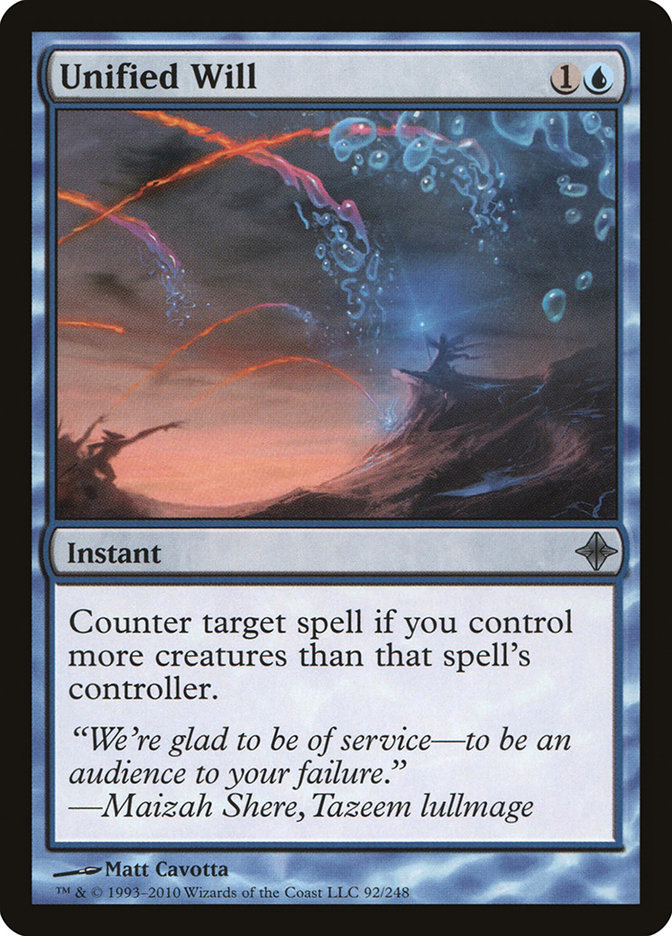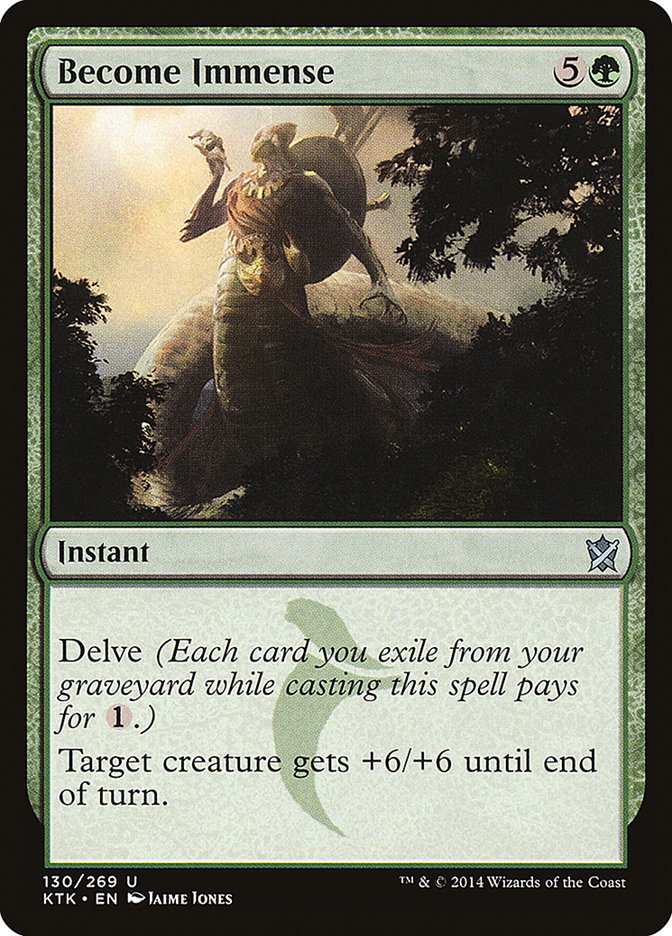Grand Prix Dallas is over. To the surprise of everyone, Skred Red took home the trophy. As I’m writing this I can’t help but feel like I’m in an alternate reality.
Creatures (8)
Planeswalkers (5)
Lands (22)
Spells (25)

I spent this week preparing for #GPDFW and was focused on what deck I could play that would give me the biggest edge in the format. Browsing around recent event results of the SCG Tour and Magic Online I saw that Dredge was extremely popular. If I wanted to win the tournament, I’d have to be prepared for it to win.
Flat out: Dredge is a busted deck. Catharic Reunion increased the speed in which the deck could develop on the battlefield, sometimes faster than graveyard hate like Rest in Peace could even prevent. I went into testing for the tournament with the opinion that Dredge was the frontrunner for best deck, but at the same time, it was a deck everyone was going to prepare for in some way. In Modern, I like to play decks that people are unprepared or underprepared for. I decided to not spend time testing Dredge for this reason but knew I’d need to find ways to beat it to win the tournament. As it turns out, this wasn’t necessarily true. Dredge was scarce at the Grand Prix, and I didn’t play against it once. I don’t think that will remain true and still think Dredge is warping the format in a not so good way. I’ll get into that more in a bit.
The Modern format is in a place where everyone is doing their own thing and not really interacting. So many “unfair” decks around makes it hard to cover all the bases with decks like Jund, Jeskai, or other similar “fair” decks. Sideboards are stretched out between graveyard hate, artifact hate, and answers to big mana strategies.
My logic going into the tournament was that if Jund wasn’t going to be a good deck for the metagame and everyone wasn’t going to interact, I wanted to play a deck with the fastest goldfishing potential.
This led me early in the week to Death’s Shadow, and here is where I landed for the Grand Prix:
Creatures (19)
Lands (17)
Spells (24)

Sam Black wrote a great article about Death’s Shadow if you want to learn more about the archetype.
I wanted a deck that was both going to be able to beat Dredge and also win quickly to race other decks that weren’t as interactive. Death’s Shadow is good at killing quickly and has a relatively easy time beating Dredge with the Become Immense + Temur Battle Rage combo because the deck doesn’t have many ways to interact at instant speed, even post-sideboard.
After playing the deck to some mediocre results on Magic Online, I managed to have good results against Dredge, but middling results against other decks like Jund, Infect, and Bant Eldrazi.
To put it simply, I didn’t feel very confident this deck was much better than any other.
Now I will say the deck is incredibly difficult to play perfectly, and I cost myself a spot in the Top 8 potentially by not managing my life total against Infect well, but once you learn to play the deck it’s extremely fast and powerful, often goldfishing on turn 3, and a large percentage of the time, on turn 4. That said, my initial conclusions were that Death’s Shadow was good, but not significantly better than the rest of the decks in the format.
So where do I go from here?
I spent some more time thinking about Affinity and Jund, decks I’ve played in the past to strong finishes and how I would build them for this tournament and moving forward in the current metagame. I started with Affinity.
Now I didn’t change much from my last Affinity decklist, but I did change a couple of things that I really like now.
Here is the Affinity list I would have registered last weekend, and believe me I was very close:
Creatures (27)
- 4 Arcbound Ravager
- 4 Ornithopter
- 1 Master of Etherium
- 4 Steel Overseer
- 3 Memnite
- 3 Etched Champion
- 4 Signal Pest
- 4 Vault Skirge
Lands (16)
Spells (17)

I didn’t make any changes to the maindeck I’ve been playing except moving back to the fourth Glimmervoid because there are less Path to Exiles right now. Having a second basic isn’t as necessary, and you want to be able to cast your Galvanic Blasts as early as possible.
Now the major changes I made to this deck were all in the sideboard and focused specifically on two decks gaining in popularity: Dredge and R/G Scapeshift decks.
The first card I want to talk about was going to be in 100% of the sideboards I was going to play this weekend.
That card is Ravenous Trap.
Ravenous Trap is exceptional against Dredge, but loses a bit of its versatility outside of that.
Traditionally in Affinity you play Grafdigger’s Cage or Tormod’s Crypt as your graveyard hate of choice. This makes a lot of sense; both of these cards give you added benefits alongside artifact synergy cards like Arcbound Ravager, Mox Opal, Cranial Plating, and Master of Etherium.
The problem with these cards, however, is just that. They’re artifacts. Dredge is already bringing in cards like Ancient Grudge, Nature’s Claim, and Abrupt Decay. Not only are these cards already good against the Affinity deck on their own, they also interact with sideboard hate cards. Ravenous Trap, however, sits in your hand so you can protect it from their sideboard cards.
Often you’ll let Ravenous Trap sit in your hand, and they’ll cast a Cathartic Reunion discarding a Golgari Grave-Troll dredging through a big chunk their deck putting Narcomoeba triggers on the stack. Once the Cathartic Reunion is done resolving, you can respond to the triggers with a Ravenous Trap exiling all the additional value they’ve gained from dredging while also neutering their deck in terms of total threat density. As long as you can put some kind of pressure on your opponent, Ravenous Trap is the sideboard card you want for dredge. You do lose versatility as Ravenous Trap isn’t as versatile as Grafdigger’s Cage. It may be correct to run a split of the two so you have the Grafdigger’s Cage for decks like Abzan Company.
The next couple of cards I added to the sideboard of Affinity are a copy of Blood Moon and Unified Will.
I learned at the last WMCQ that Affinity isn’t as good as I thought against big mana strategies like Scapeshift and R/G Tron. While they are favorable matchups, they are still closer than I’d like them to be. I decided to play a Blood Moon to mess with the core strategies of these two different decks while also getting a nice lock piece against a wide variety of other decks relying on only non-basic lands, such as Death’s Shadow.
Unified Will was also a nod to the uptick in popularity of R/G Scapeshift decks. Spell Piercing an early ramp spell like Farseek or Explore was fine, but sometimes they would just play Search for Tomorrow and cast Sakura-Tribe Elder, and Spell Pierce would rot in my hand while I lost to a fast Primeval Titan or Scapeshift with mana to pay for Spell Pierce. Unified Will is a hard counter against these mostly creatureless decks that can steal the game as long as you’re pressuring their life total enough.
Affinity was always in the back of my mind as a fallback option if I didn’t like the other options for this weekend. My main issue with Affinity right now is I believe it is weak to Dredge, and I didn’t want to put myself in that spot thinking I would need to beat Dredge to win the tournament. I think Ravenous Trap is an excellent solution for this is problem and is what I would play moving forward in Affinity if Dredge is highly represented in whatever metagame you happen to be a part of.
Earlier I mentioned I didn’t think Jund was in a good spot because it was relatively weak against Dredge without some serious consideration to how the deck is built. I wasn’t even going to bother trying with it until I saw this tweet from Willy Edel.
Just took good old jund for a spin (since abzan is too mainstream atm). Deck performed great. Anger main is a must. Chandra is nuts #modern pic.twitter.com/2ICJBK4k64
— Willy Edel (@bazardebagda) November 3, 2016
The inclusion of Anger of the Gods in the maindeck helps with the Dredge matchup significantly. With a lot of the fast decks being creature-based in the format like, Death’s Shado, Infect, and Affinity, Anger of the Gods is not in a bad spot in Modern. It’s going to be completely dead sometimes when your opponent isn’t playing many creatures or is going way over the top, but that’s when Chandra, Torch of Defiance will be at its best.
Chandra, Torch of Defiance is an extremely resilient threat that also provides a card drawing engine for the Jund deck in these grindier matchups where your removal is at its worst.
One thing that Willy’s deck was missing, in my opinion, was Grim Flayer. Grim Flayer provides an additional creature that will survive through Anger of the Gods while also digging you to the removal and threats you need to close out a game.
After deliberating with Steve Rubin and looking at the shell Willy Edel provided, I took off in a plane to Grand Prix Dallas and spent the four hours in the air building a Jund deck and sideboard I thought I may play in the event.
Here is the decklist I put together and Steve Rubin played nearly card for card at the Grand Prix to a 12-3 record:
Creatures (13)
Planeswalkers (5)
Lands (22)
Spells (20)

After talking with Steve about the deck after the event he liked a lot of what it was doing but wasn’t sure about Dark Confidant versus Grim Flayer. We debated before the tournament which one of the two we thought was better, and he was under the impression that without some dedicated cards for delirium like Tarfire and Mishras’s Bauble he didn’t want to play the full playset of Grim Flayer. After the event Steve agreed that maybe Grim Flayer would have been the better four-of, and maybe trimming a Chandra, Torch of Defiance or moving it to the sideboard would have been the smarter option. Chandra is going to be great in the mirror and against other midrange or control decks but is simply too slow for the faster Modern decks. Steve also mentioned he thought there were too many fetchlands. It’s possible you want to cut a Wooded Foothills for a Twilight Mire.
I’d recommend trying the deck with two Dark Confidant and four Grim Flayer and cutting a Chandra, Torch of Defiance from the main deck and adding a single Tarfire to help with delirium.
All three of these decks I think are good choices in Modern right now, but I’d still lean towards playing Death’s Shadow. Right now in Modern, it’s kill or be killed, which leads me to my next point.
All in all I didn’t have a great time testing Modern this week. When I’ve given any negative opinions on Modern before I’ve had people say to me that people tend to complain about Modern when they don’t do well in it. I can assure you that’s not the case. In fact, I think my win percentage in Modern is much higher than it is in any other format. I either made Top 8 or lost playing for Top 8 in the last round of the last three consecutive Modern Grand Prix I’ve played. I don’t want to fix Modern because I have a personal vendetta against it, I just want the format to be fun and interactive.
The gameplay is fast and punishing, and it’s too hard to play a reactive deck with a variety of really powerful fast decks in the format. The last time I felt as much pressure to win a die roll was when Eye of Ugin was still legal in Modern because I wanted to be the first person to play a Thought-Knot Seer. When a format gets to this point I think it may be time to make a couple of changes. I would personally like to see two cards banned in Modern.
If it were up to me, I’d ban both Golgari Grave-Troll and Become Immense.
Golgari Grave-Troll is simply a broken card. When the card is good, it’s just too good. I had a discussion with other players and I thought it might be fine to just ban Cathartic Reunion to leave Dredge as it was before Kaladesh. I think that version of the deck was much less explosive and left the deck more vulnerable to hate because they didn’t have as many ways to dig to a Nature’s Claim or Abrupt Decay for a Grafdigger’s Cage. The regularity in which Dredge can beat a single graveyard hate card is scary.
With that said, Golgari Grave-Troll just leads to other potential mistakes down the line and it’s safer to just ban it again. It’s possible the Dredge deck can still exist without Golgari Grave-Troll and with Cathartic Reunion by just playing a card that dredges for less, like Golgari Thug. This would weaken the deck, but it’s possible it could still be viable, just not as consistently broken as the current iteration of the deck. I know banning cards shouldn’t be taken lightly, but Dredge is simply too good against decks trying to play a game longer than five or so turns.
Become Immense I think is a truly problematic card. Become Immense enables decks like Death’s Shadow and Infect to kill on turn 3 fairly regularly when the card is drawn. Way too often a player will tap out on turn 2 for a Tarmogoyf and die to an unblockable Infect creature, or worse yet, a creature blocked by the Tarmogoyf because it had Temur Battle Rage and Become Immense cast on it. Having a card like this in the format puts so much pressure on players to mulligan extremely aggressively for answers, or to hands that can kill faster than Become Immense is killing. This leads to a bunch of non-games decided by one player mulliganing into a non-functional hand. If the intended goal is to slow down the format some, then I think Become Immense should go.
I think making both of these changes will open up the format more, and we may see some cooler and slower more interactive decks. Who knows, maybe people will even play Skred Red?







